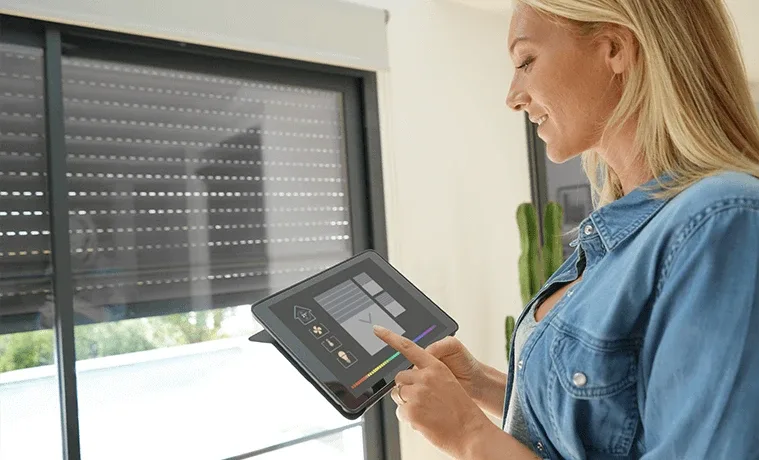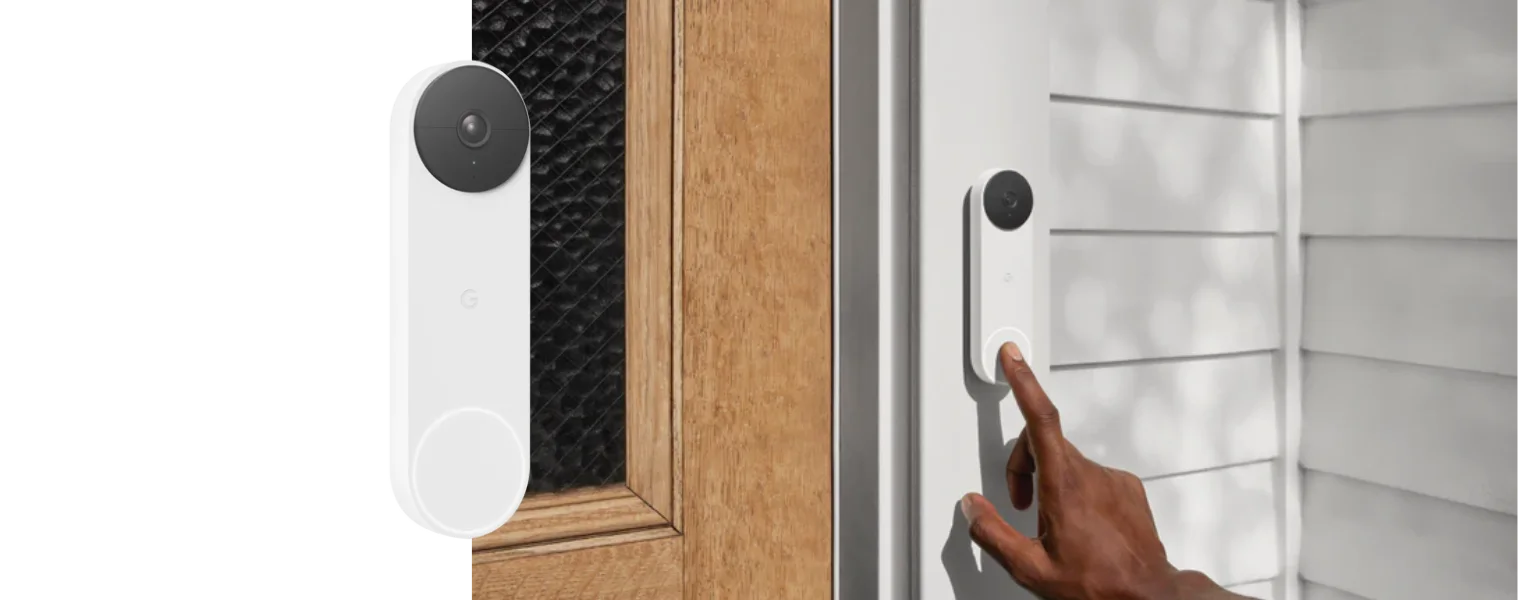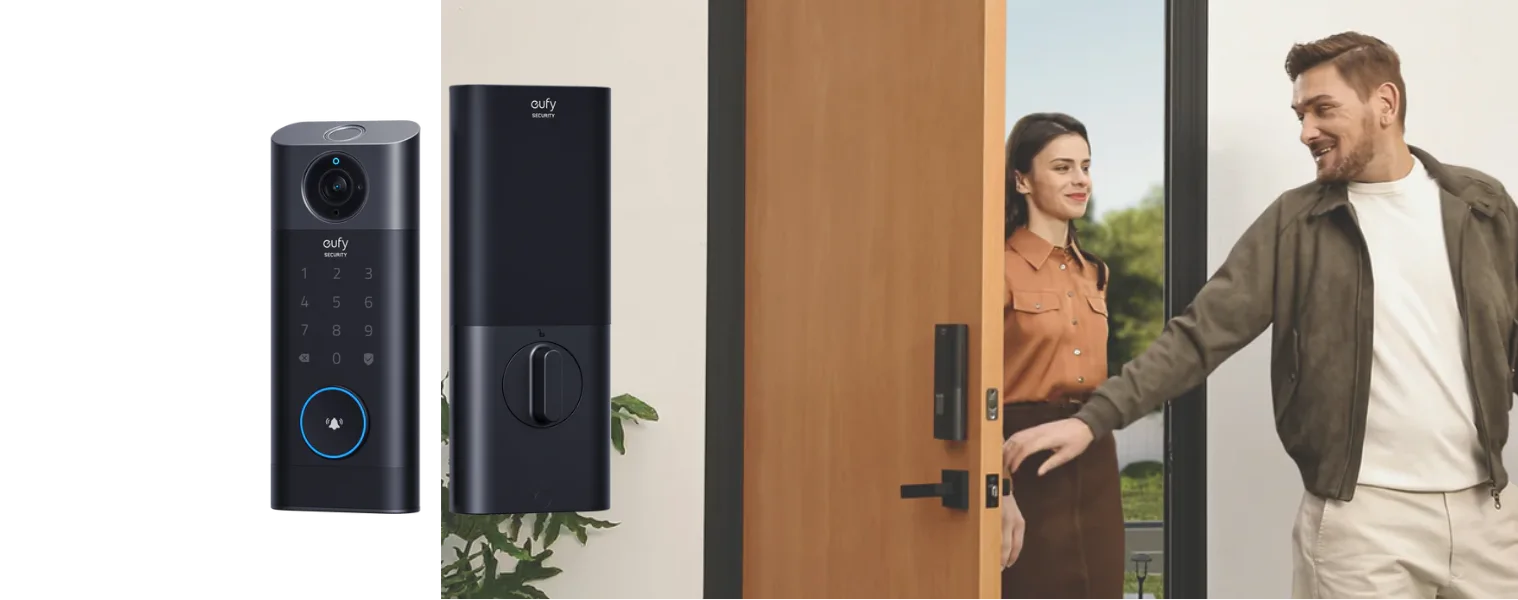ARTICLE
Best tips to improve your Home Security System
October 2, 2025-4 min read
It is normal to feel anxious about leaving your home unsecured, especially with pets in the house. Having a smart home security system is an easy way to make sure everything’s OK, direct the postie about where to leave packages, and tell the dog to get off the couch from anywhere in the world.
Here are some tips to make sure your home security system is the best it can be to suit your home, lifestyle and budget.

How Smart Homes Mean Smarter Security
It used to be that having a monitored security system meant you had to pay hundreds, if not thousands, of dollars to have a security company on call to respond to your home alarm going off, which would only happen once someone had already made it through your door. Now, with products like the Google Nest Doorbell, you get a notification on your phone when someone walks up to your door, you can talk to them through the system, and you have the video saved to show the police if action needs to be taken.
It's taken an incredibly complicated and expensive system that required professional installation and monitoring and turned it into an inexpensive device you can install and set up yourself in less than an hour.
The latest Nest Doorbell has made huge leaps and bounds when it comes to making sure, you’re getting the best information, too. “With on-device machine-learning, the Google Nest Doorbell can recognise people (including familiar faces), animals, vehicles and packages – cutting down on unhelpful notifications and prioritising what you need to see,” says Matt Gaskell. “And we know conditions across Australia can greatly vary, so these devices have been trained on 40 million images to accommodate lots of different environments and lighting conditions, meaning reliability and accuracy are even better.”
Shop The Google Next Doorbell

Inexpensive Security Updates
The best thing about smart security systems is that they’re modular; you can start with one small thing that you think will make the biggest difference and grow from there as needed.
As mentioned, the smart doorbell is a perfect way to dip your toe into the waters of home security. Another option, though, is the smart door lock.
“They’re great for when you have kids who are old enough to go home by themselves in an emergency, but who might be prone to losing their keys, or if you or your partner lose their keys a lot (there’s one in every marriage), or if you need people like a plumber, cleaner or babysitter to have access to your home, but don’t want to hand out keys,” says a happy buyer from The Good Guys.
The eufy Security Smart Door Lock Touch is a secure lock with multiple ways to unlock it. You can use a pin, fingerprint, Bluetooth app (in which you can send temporary, one-time use keys to the babysitter), or just a key to get in.
Using a single camera security system is another great way to make sure an important area of your property is monitored and is a bit more subtle than using a multiple camera approach. However, using multiple cameras means you can cover your front and back doors, driveway and other potential areas of incursion.
Also, remember that security cameras don’t just have to be used for security. Connected cameras like the Arlo Pro 3, which has two-way speakers and microphones, would make a great baby monitor, or can be used for keeping an eye on the fur babies while you’re out.
Just make sure you aren’t letting your security system down by practising poor password security. These devices are made to the highest standards, but they can still be hacked if you allow your Wi-Fi or account security to be lax. “Ultimately, your devices are only as secure as your account,” says Matt Gaskell. “That’s why the new Nest Cam and Nest Doorbell require a Google account, which comes with added protection like suspicious activity detection, two-step verification and password check-up.”
Shop The Arlo Pro 3 Floodlight Camera
Shop The eufy Security Smart Door Lock Touch

Getting Serious About Security
If you want to get serious about security, it’s worth investing in a proper multi-cam set up from a company that specialises in security. It’s easy to check out different areas of your home or business in an app or online, and some will keep recordings of movement for a period of time so you can forward them to the relevant authorities if needed (or put the video on YouTube if it’s an animal being particularly cute). There are plenty of options out there from brands like Arlo, Google and Uniden.
“Security cameras don’t just have to be used for security. Connected cameras like the Arlo Pro 3, which has two-way speakers and microphones, would make a great baby monitor, or can be used for keeping an eye on the fur babies while you’re out.
”
Indoor Systems: Pros And Cons
Having an indoor security system can be great if you’re wanting to keep an eye on pets, children or customers. Aside from potential clashes to the aesthetics, there’s no downside to having an indoor security system at your business, but having one in your home could make your family feel uncomfortable. If you’re planning on installing one at home, make sure you have a family meeting first to double-check everyone is on board.
Keeping An Eye On Outdoors
Outdoor security cameras are so easy to set up now, you don’t even have to wire them into the mains power if you don’t mind charging the battery every month or so, or using a solar panel. Just identify the best place to install it and use the included mounting bracket. You can start small with a smart doorbell, then add extra cameras. Or if you’re really serious about keeping things safe, get a multi-camera system from eufy , the experts in security.
How Much Do I Need To Spend?
This is a very personal question and really depends on your budget and what kind of area you need to protect. Affordable options include this Arlo Essential 2K Video Doorbell, or if you want a more premium system, Ring Security Cameras are the way to go with their High Quality 4K.
Five Ways To Increase Security While You’re On Holiday
If you’re going to be away for a while, make sure you suspend any paper deliveries and redirect the mail to a trusted friend so there aren’t any obvious signs someone is away.
Use smart lights and speakers to make it look and sound as though someone is home in the evenings. Just set up a schedule in the apps and it’ll be like you never left.
Have a neighbour look after your yard by mowing the lawn.
Don’t post on social media about no-one being home. Share your holiday selfies, but maybe also talk about how your “house-sitter” is going.
Get a smart doorbell so you can see if anyone comes to your door.
There are so many ways to keep your home safe that there’s bound to be one that works for you. Why not come in-store or go online to find the perfect solution to your home security needs.






